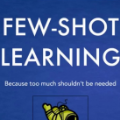Radar for deep learning-based human identification has become a research area of increasing interest. It has been shown that micro-Doppler ($\mu$-D) can reflect the walking behavior through capturing the periodic limbs' micro-motions. One of the main aspects is maximizing the number of included classes while considering the real-time and training dataset size constraints. In this paper, a multiple-input-multiple-output (MIMO) radar is used to formulate micro-motion spectrograms of the elevation angular velocity ($\mu$-$\omega$). The effectiveness of concatenating this newly-formulated spectrogram with the commonly used $\mu$-D is investigated. To accommodate for non-constrained real walking motion, an adaptive cycle segmentation framework is utilized and a metric learning network is trained on half gait cycles ($\approx$ 0.5 s). Studies on the effects of various numbers of classes (5--20), different dataset sizes, and varying observation time windows 1--2 s are conducted. A non-constrained walking dataset of 22 subjects is collected with different aspect angles with respect to the radar. The proposed few-shot learning (FSL) approach achieves a classification error of 11.3 % with only 2 min of training data per subject.
翻译:深入学习的人类识别雷达已成为人们日益感兴趣的一个研究领域。已经表明微多普勒($mu$-D)可以通过捕捉周期性肢体的微动作来反映行走行为。主要方面之一是在考虑实时和培训数据群大小限制的同时,最大限度地增加包括的班级数量。在本文中,利用多投入-多输出(MIIMO)雷达来制作高角速度($\mu$-$\omega$)的微动光谱(mou$-$-omga$));调查将这种新形成的光谱与常用的美元/mu$-D相融合的效果。为了适应未经控制的真正行走运动,使用了适应性循环分解框架,并对半曲周期($\approx$0.5 s.)进行了计量学习网络培训。对各种班级(5-20)、不同数据集大小和不同观察时间窗口1-2 s. 2 s. 的观察时窗口的影响进行了研究。对22个主题的未经控制行走数据集进行了调查,只收集了不同角度的22个主题的数据集,只对雷达进行了不同角度的研究。



